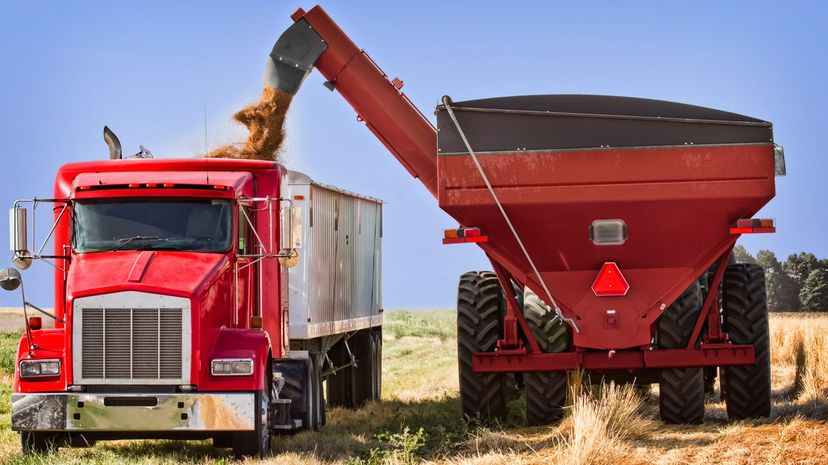
About This Quiz
It's believed humans first started harvesting wild grains at least 22,000 years ago. Can you imagine what life might have been like back then? What it must have been like for our primitive ancestors to be taking the food they found growing wild around them and harvesting it to keep themselves and their families alive? It's pretty amazing when you think about it.
Over the generations - and not just centuries but millennia - agriculture evolved from the simple practice of seeing plants growing and picking them to eat to specifically cultivating those plants. Over time, humanity has learned what grows best where and when, how to process tough grains into edible food and flour and even how to raise livestock to create and sustain whole societies of people. Without agriculture, without farming, we wouldn't exist as a society. Taken from that perspective, it's the sort of thing everyone should know at least a little bit about. Not just why we do it, but how, including the tools and equipment that make farming possible. There are a lot of tools out there, some more specialized and hard to recognize than others. But what if we told you what all this equipment does? Think you could tell us what it is? Take the quiz and see!
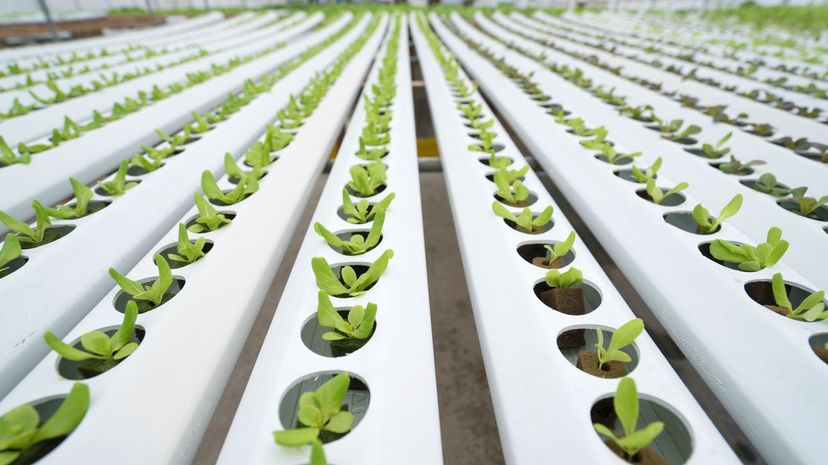
Hydroponic systems are a pretty clever and efficient way to grow plants that require only water instead of soil and can be done in some remarkably small spaces compared to traditional soil farming. A full farm-level hydroponic system could cost hundreds of thousands of dollars.
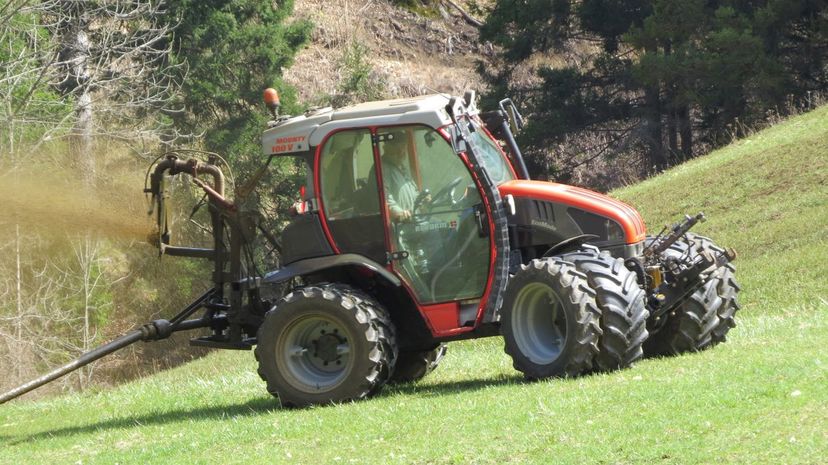
Manure spreaders are pretty integral to any farm that needs to fertilize crops. The technology is pretty simple: it's just a wagon that holds the manure and spreads it as it's dragged behind a truck or tractor, the same as it was pulled behind a horse years ago.
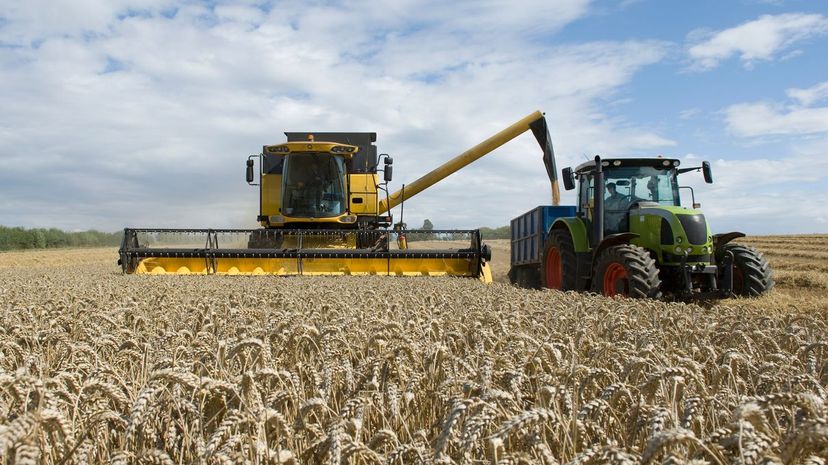
Combine harvesters get their name from the fact they combine three different tasks in one machine - they reap, thresh and winnow. Thanks to their versatility, if you can grow grain, you can harvest it with a combine.
Advertisement
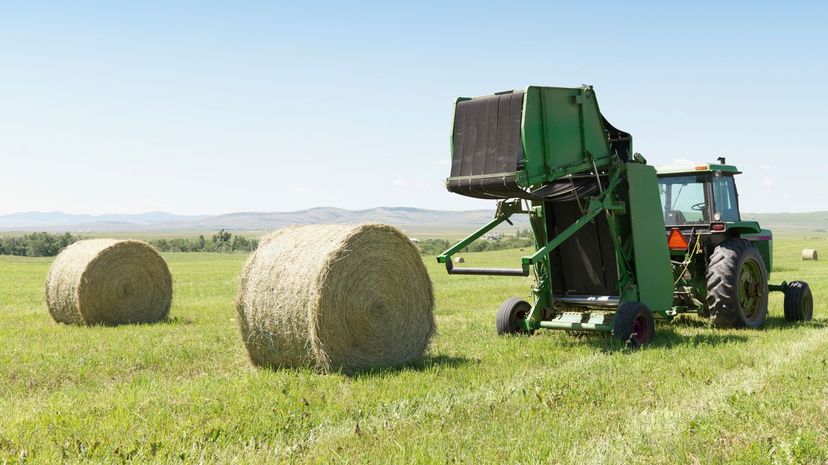
A hay baler, in the very simplest terms, makes bales of hay. The hay baler made it so farmers no longer had to stack hay in those giant haystacks with pitchforks which were both wasteful thanks to the amount of hay that would rot and potentially dangerous as they could be susceptible to spontaneous combustion.
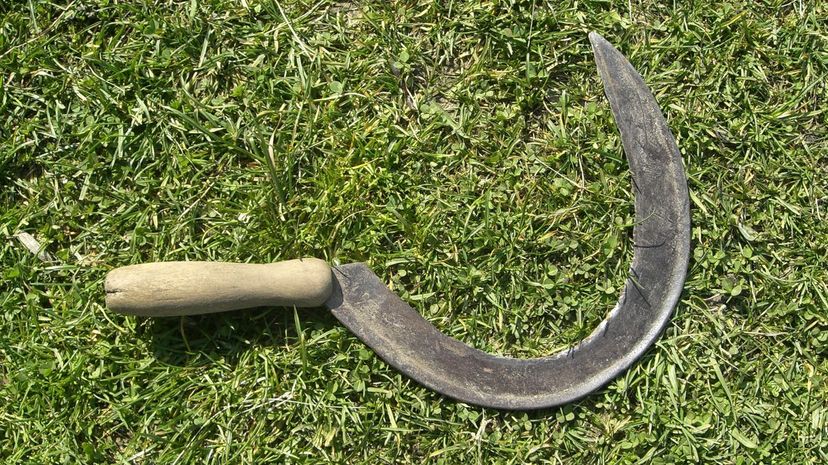
A sickle is one of the most basic tools in the history of agriculture used for harvesting pretty much anything that grows. The most ancient blades were made of flint well before humankind had developed the ability to work steel and other metals.
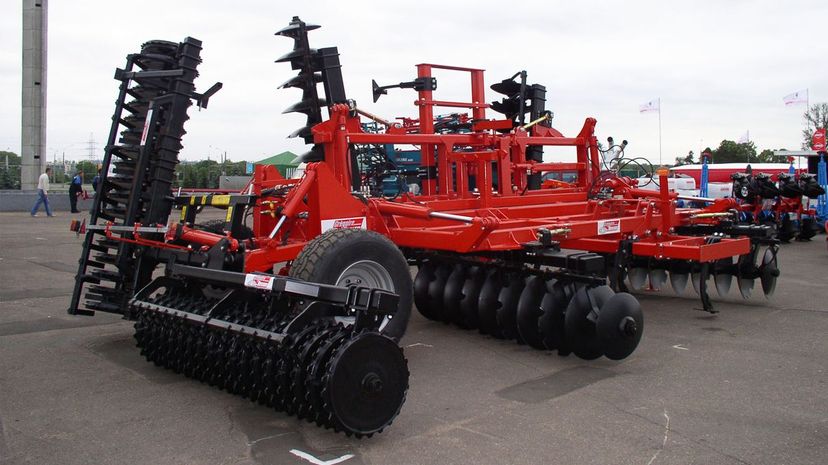
A disc harrow is a tool that gets dragged behind a tractor, truck or, if you're old school, a horse. The round blades are set at angles that let them slice into any soil and ensure even tilling. It's thought that overuse of these blades back in the day may have contributed to the Dust Bowl.
Advertisement
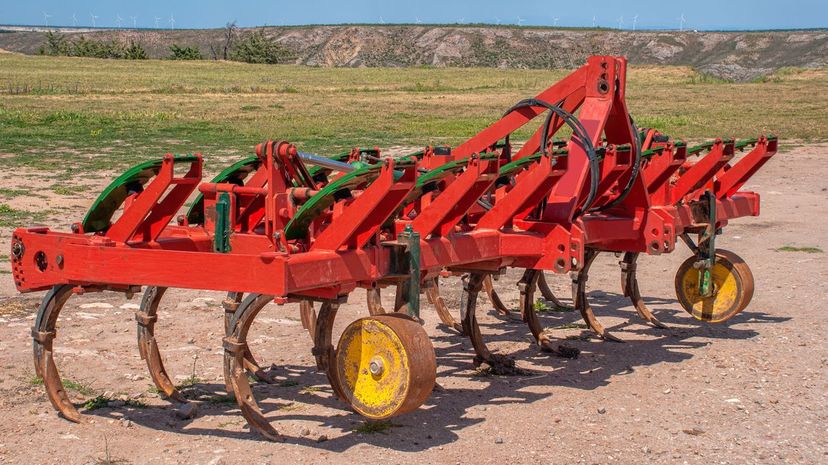
Plows are some of the oldest tools in creation. In the simplest terms, even a hoe is a kind of plow, but more sophisticated versions of the plow that could cover larger areas with less work were in use even as far back as Ancient Egypt, pulled behind draft animals.
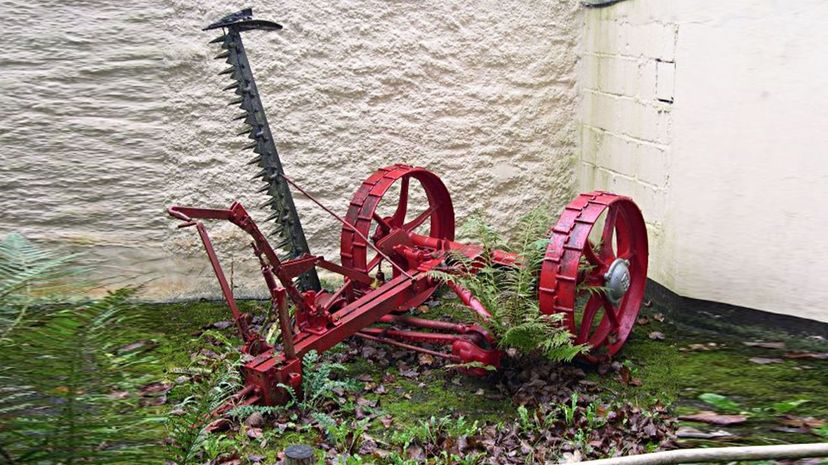
Reapers are simple machines that are used to cut and harvest straw or grains. The Ancient Romans had developed a reaping machine that could be pulled behind oxen, but the design was lost to history. Later cultures ended up going back to hand-reaping with scythes. Nowadays, the combine has replaced most reapers.
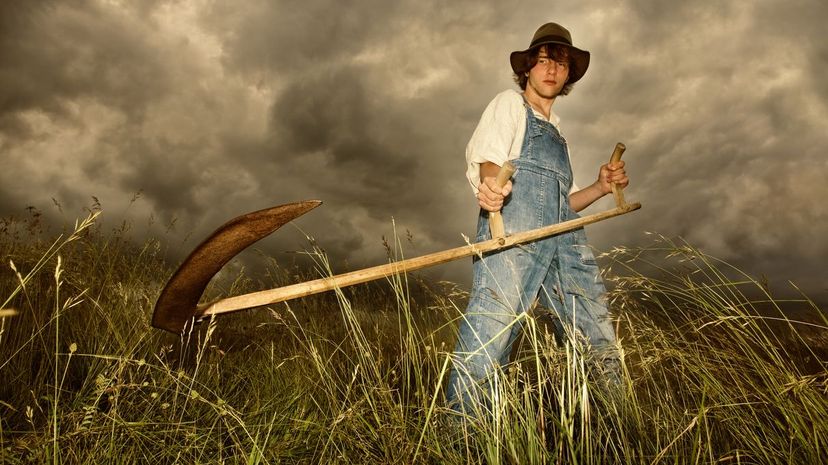
Scythes have been in use for thousands of years, and it makes sense that they would be one of the earliest tools ever - they're knives on sticks. Initially, when people used scythes, they were considered to be mowing the lawn or whatever plants, but with the advent of mechanical mowers, the term fell out of use. We consider mowing strictly something done with a lawnmower.
Advertisement

Transplanters are efficient ways to transplant seedlings. You can get simple handheld transplanters or larger version that need to be towed behind a tractor. The point of using one is to save the manual labor of bending down and digging a hole each and every time.
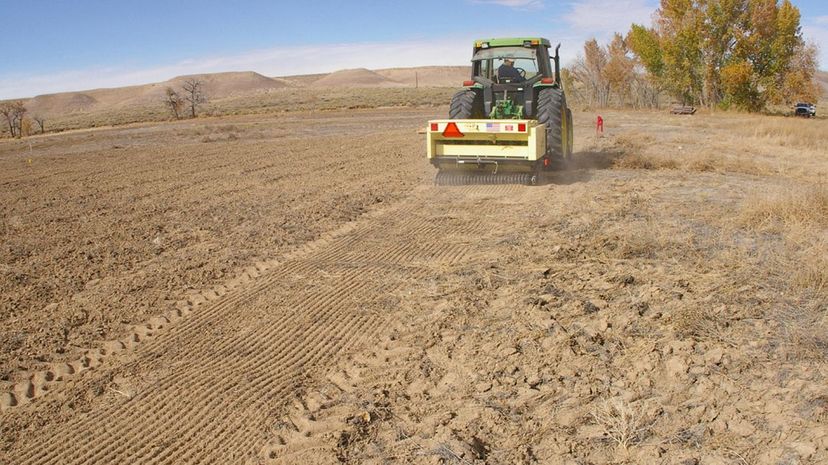
A broadcast seeder is a pretty simple device that's essentially a bucket full of seed with a disc mounted under it that spins as the seeder is moved. The spinning action spreads the seed about in a quick and efficient way. You can get small, handheld versions or large ones that need to be towed.
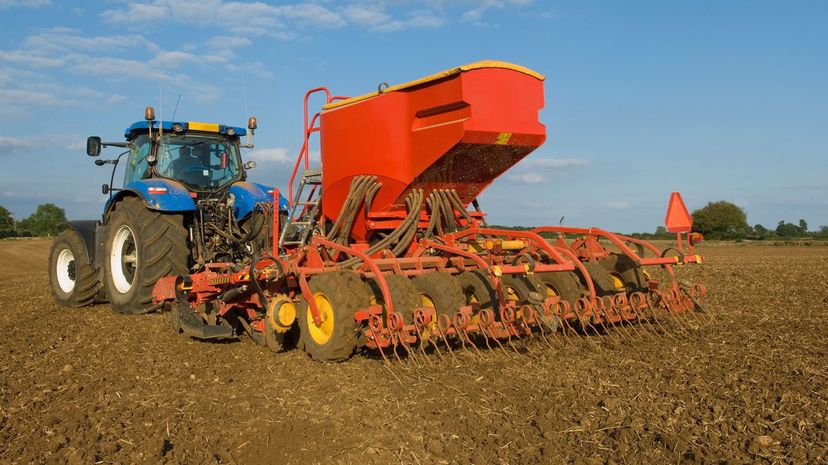
A seed drill is a dynamic way to ensure all your seeds get planted at the exact same depth every time. It pushes seeds into pre-tilled earth at the perfect depth to ensure they're fully covered by soil and less likely to be snagged by birds or other animals.
Advertisement
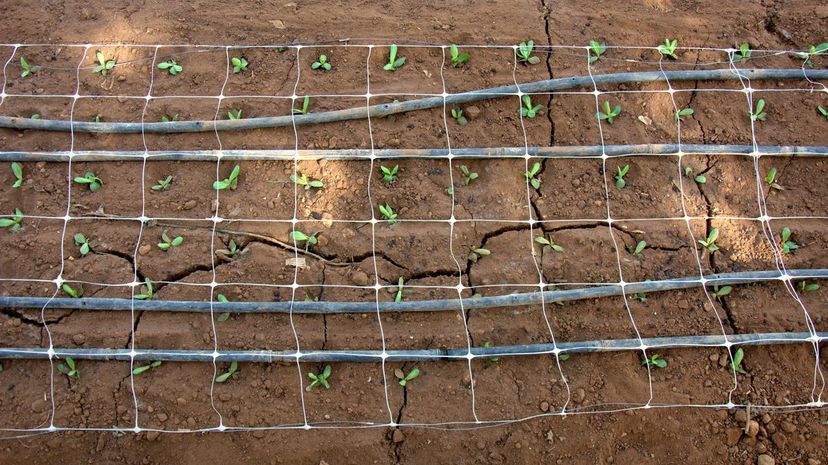
Irrigation is essential to agriculture since most agricultural land isn't right next to a helpful pond and no one has mastered control of the rain yet. Depending on location and farm size, it can cost about $50 to $75 per acre per year to keep a farm irrigated.
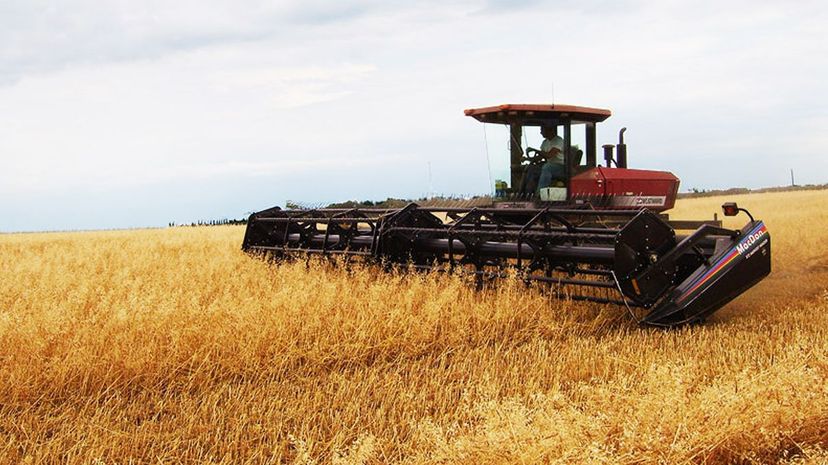
A swather will cut your hay or grain and then bundle it up in what farmers call a windrow. They look like those tunnels that rabbits make in cartoons when they dig underground: just a long, winding path of cut vegetation lining a field.
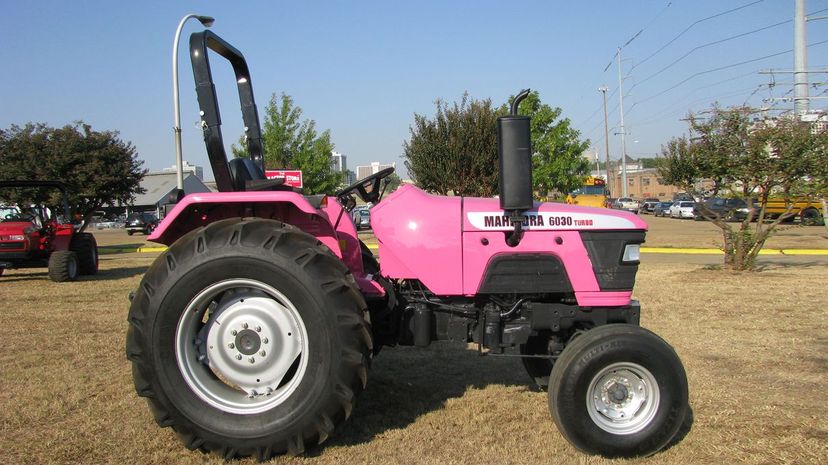
Tractors are an essential farm tool that takes the place of draft animals like oxen and horses that had been used for centuries. Most modern tractors can't go much faster than 25 or 30 miles per hour, but they have an incredible hauling capacity and can work in all kinds of soil conditions.
Advertisement
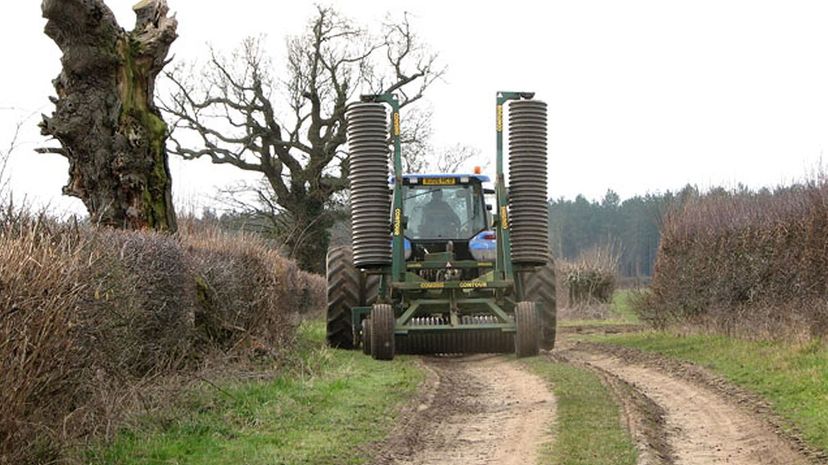
A cultipacker looks a lot like a glorified rolling pin because it is. Pulled behind a tractor, it crushes any lumps of dirt and flattens them out along with stones and air pockets so that when you do plant seeds there's a solid, cozy foundation for them to take root.
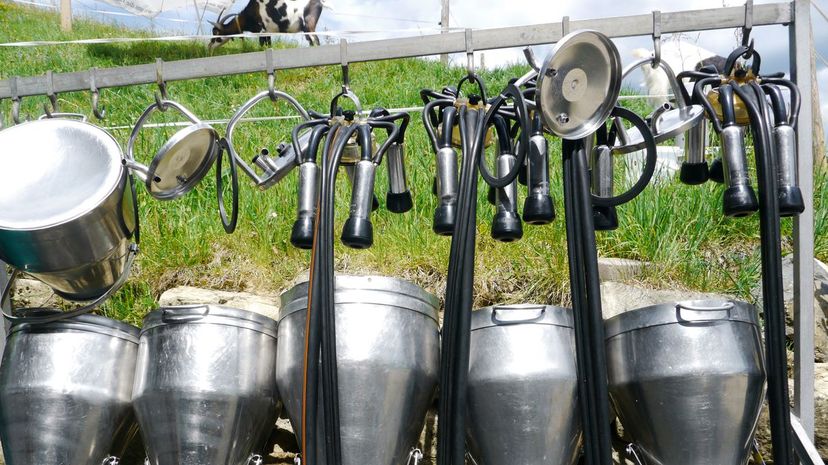
Milking machines were invented to increase efficiency in the dairy industry as manual milking obviously takes quite a while. Automatic milking systems can cost upward of $150,000 to $200,000 plus equipment and maintenance costs for a single unit, so it's quite an investment.

A post pounder is essentially a heavy steel cap with handes that fits over a fence post. It acts as a sleeve and covers the end of a fence post so you can raise and lower it, slamming the post into the ground. It's old-fashioned but much cheaper than large, automatic post-drivers.
Advertisement
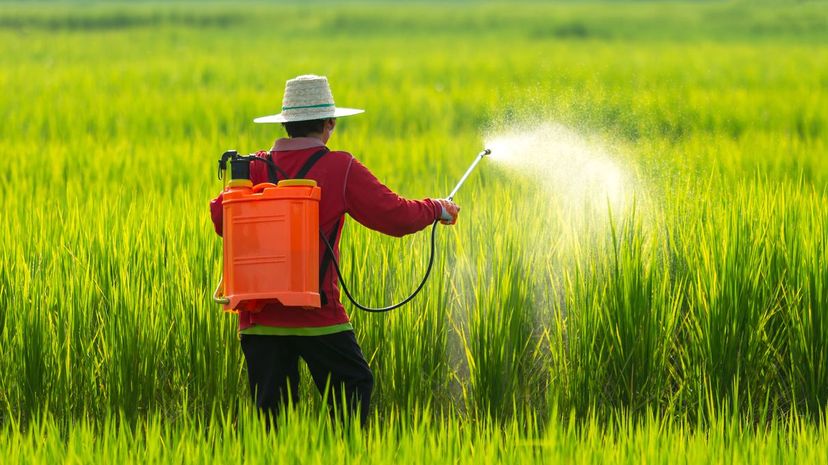
Sprayers are some of the most diverse tools when it comes to size and function in agriculture. You could have a small, handheld sprayer for use in home gardens, larger backpack sprayers to do full lawns or massive full-sized sprayers that need to be hauled behind tractors.

A plastic mulch layer puts down long beds of plastic mulch, which look just like sheets of thick plastic wrap. It works like normal mulch in a garden, preventing the growth of weeds and the loss of moisture. The machine is pulled behind a tractor digging rows on either side of the crops and pushing the plastic down to cover it.
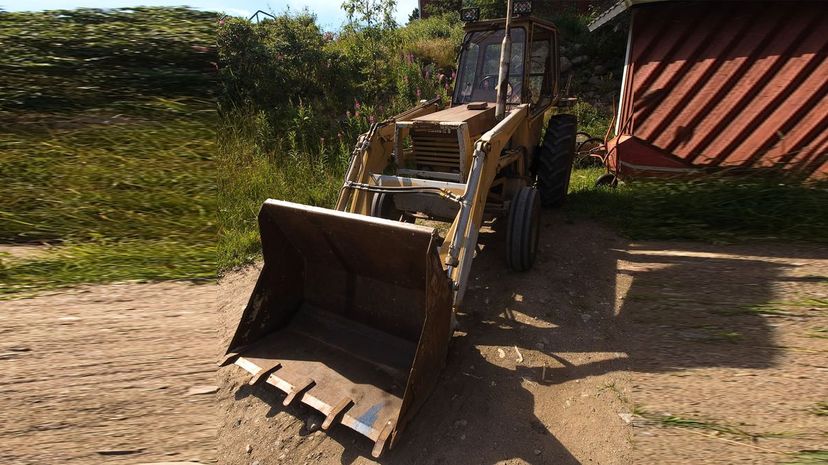
A loader or front-end loader is often used in construction but also finds a lot of use on farms of any size. They're most useful for transporting heavy loads of soil, rocks or manure around. They can also be outfitted with grabs and spikes so you can move bale and silage.
Advertisement
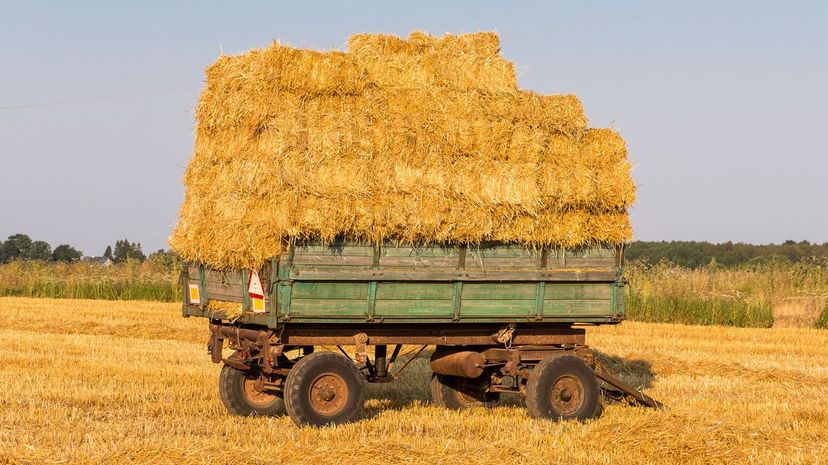
Wagons are some of the most basic tools in a farmer's arsenal and have remained relatively unchanged for ages. At the very basic level, it's four wheels and a flatbed that is hauled behind a tractor or a horse. If you only have two wheels, it's not a wagon, it's a cart.

A backhoe isn't strictly speaking just farm equipment, and many farms, especially smaller ones, wouldn't necessarily need to invest in one of these. Instead, renting one when you need to dig a hole is a smarter way to go, since a new one will set you back at least $85,000.

Hay rakes are pretty self-explanatory and have been necessary as long as hay has been cultivated. Way back when, a hay rake was something as simple as a stick, necessary to break up large piles of hay so they could dry and not get moldy. Now they're attachments to be pulled behind tractors that can organize huge quantities for collection.
Advertisement
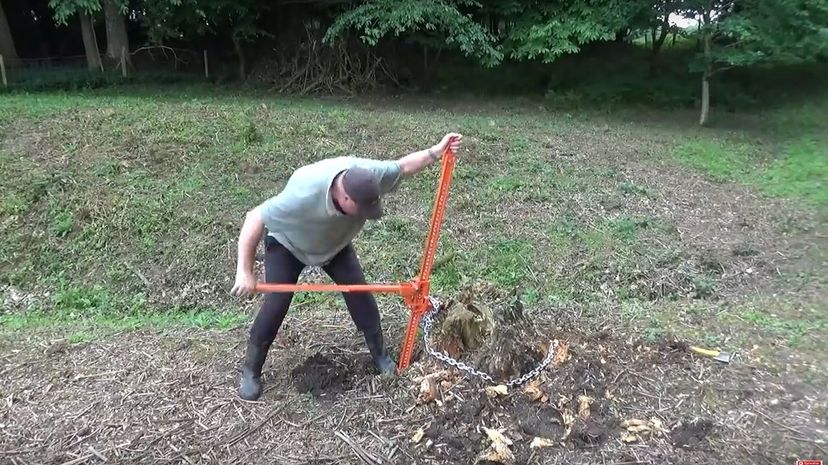
A farm jack is like a regular car jack in function but much bigger. The massive size can be used to help lift up large farm equipment, and they're also pretty handy for other tasks as well, like winching or even removing fence posts.
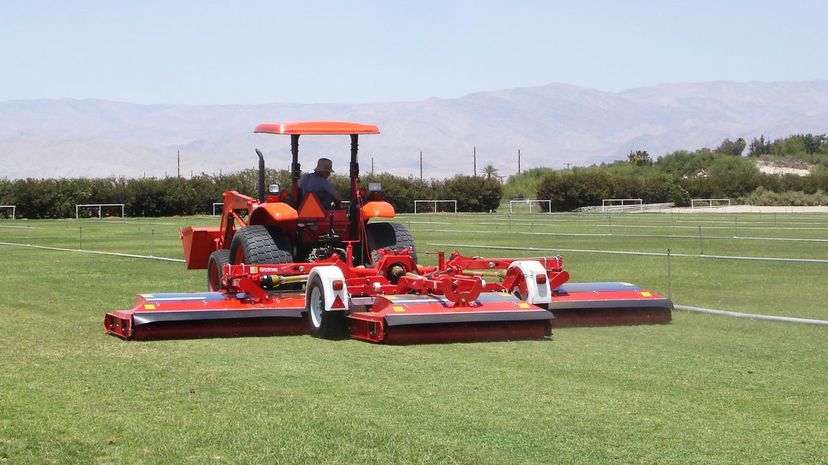
Mowers are some of the most basic and familiar tools you can use to maintain a field. Push mowers work for small areas, riding mowers for larger, sickle-bar mowers may be good for cutting hay and straw, and brush mowers can be helpful in clearing wild underbrush.
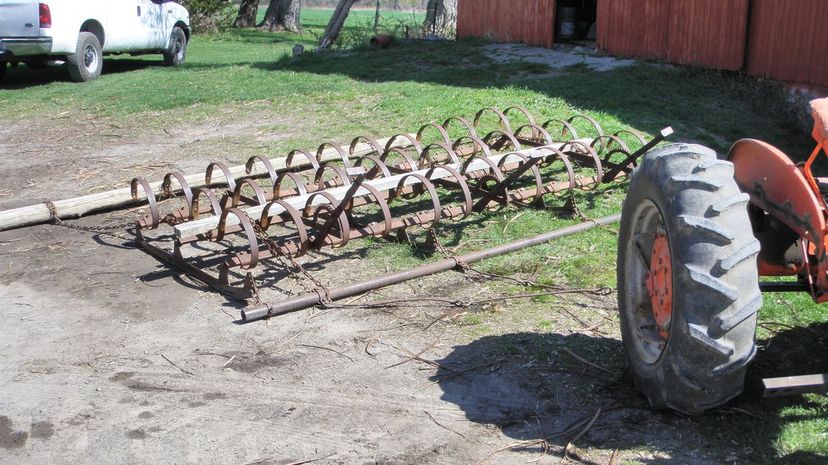
A drag harrow is a bit of an old-fashioned tool these days for keeping your field even and smooth. Because the technology is relatively old, newer disc harrows are more efficient and can be raised and lowered hydraulically; you don't see these in use very often anymore.
Advertisement
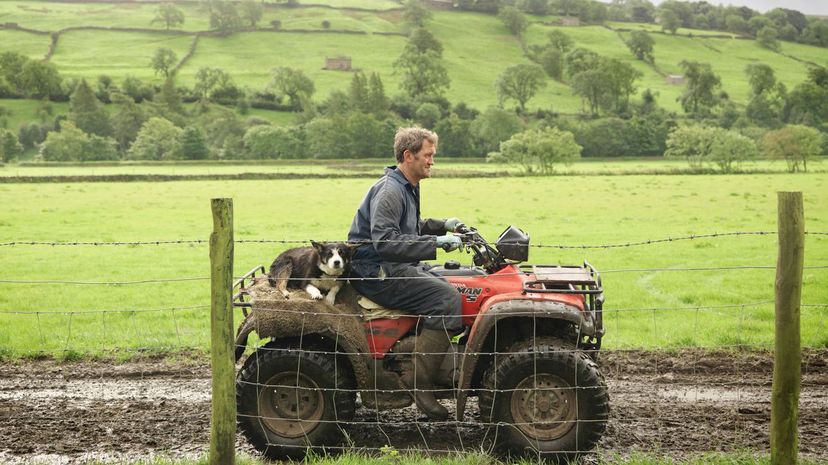
Yes, an ATV is most often used recreationally, but that doesn't mean it has no purpose. On a farm, it can greatly reduce travel time, especially in a pinch, and they're also handy when you need to haul smaller loads than you might haul with a tractor.
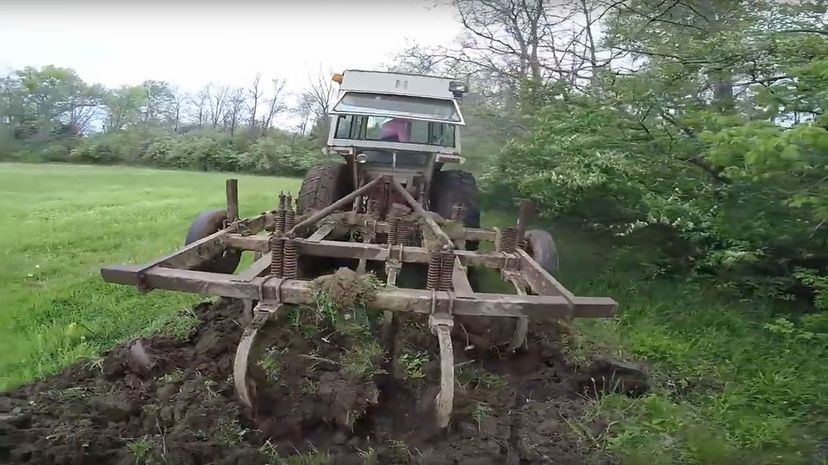
A chisel plow is considered more efficient for tilling fields than other plows as they keep the organic matter on the surface of the soil by not turning it over. That ensures less erosion overall and makes for a more sustainable kind of farming.

A conveyor is a pretty handy tool when it comes to time-saving in terms of loading and storage of things like grain. All the grain can be dumped on the conveyor, and the belt whisks it up to a storage bin or a truck or wherever you need it to go far faster than the traditional method of using a shovel.
Advertisement
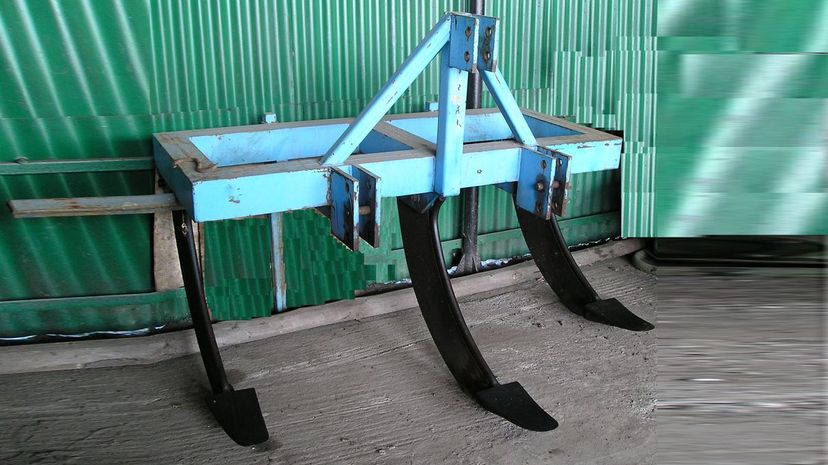
A subsoiler will till up soil nearly twice as deep as a regular plow, hitting depths of at least a foot under the ground. If soil compaction is a problem, it's the best tool for the job of loosening your soil for you.

Ginder-mixers pulverize your feed grain and work the way any kind of mill does, more or less. The grain is cut, smashed and ground-up until it's much easier for an animal to digest in the form of animal feed.
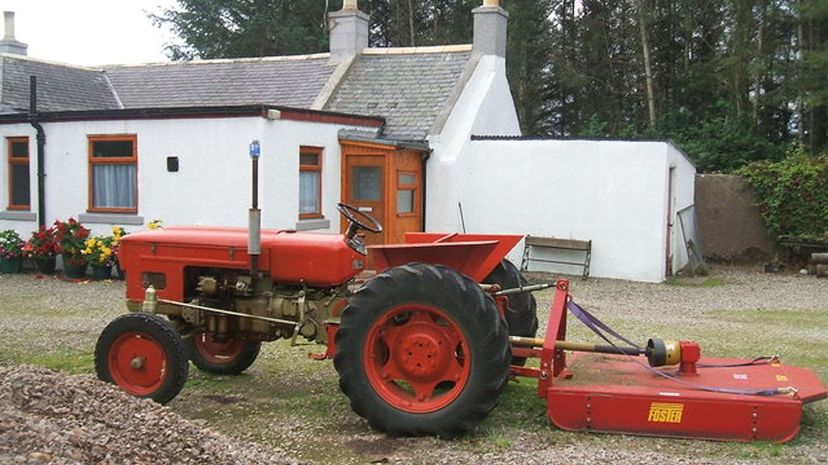
A pasture topper looks like a typical lawnmower and mostly does the same job, but it won't cut grass as short. It can even out growth to ensure it continues to grow evenly while also spreading out what's been cut to serve as fertilizer.
Advertisement
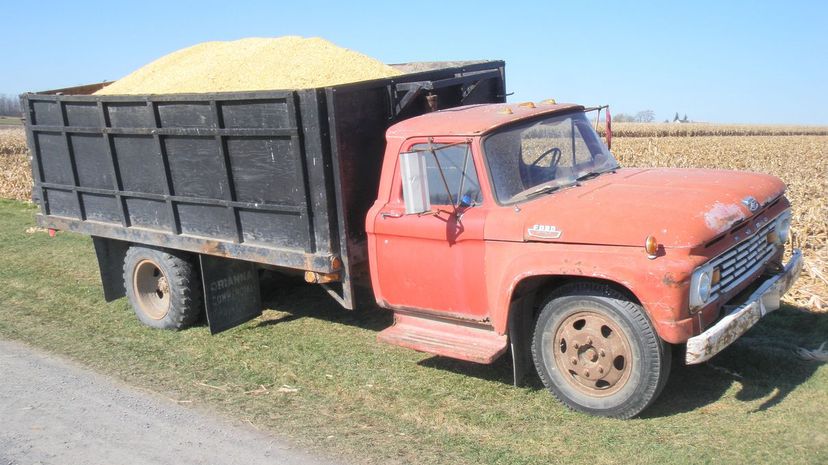
A good truck, especially a mid-size or full-size pickup truck, is pretty much essential to proper farmwork. The flatbed on a pickup truck has always been a utility tool, and the earliest versions were basically just horseless wagons.
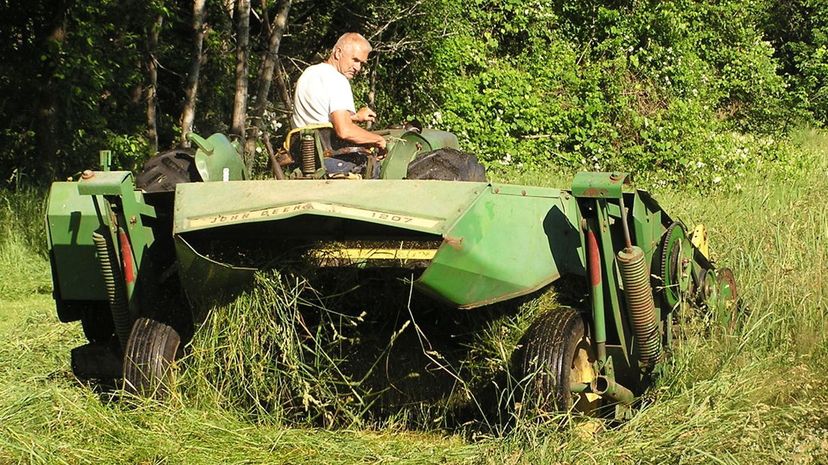
A hay conditioner forces hay through rollers that split the stalks and allows for faster, more even drying. If hay isn't dried properly as quickly as it can be, then it runs the risk of growing mold and becoming useless. Typically, a conditioner is attached to a mower so the hay can be cut, split and dried.
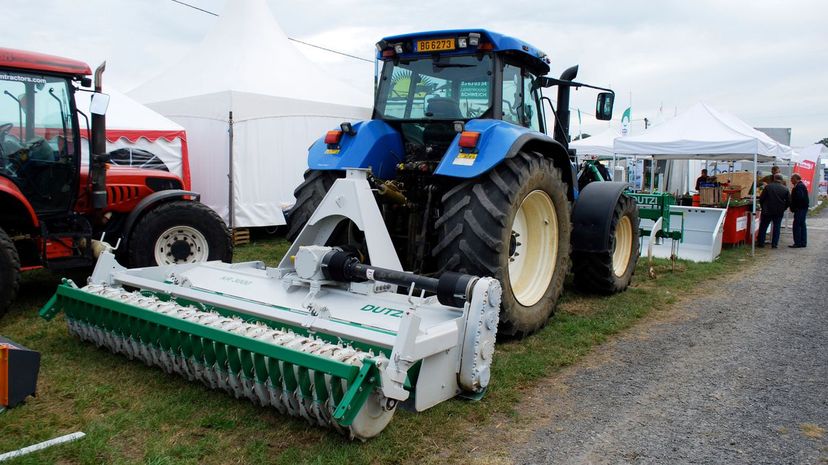
Rotary tillers or cultivators are the evolution of simple hand tools like hoes that dig into the soil to pull out weeds and prime the soil for planting desired crops. An Australian named Arthur Clifford began working on a motorized tiller all the way back in 1912.
Advertisement
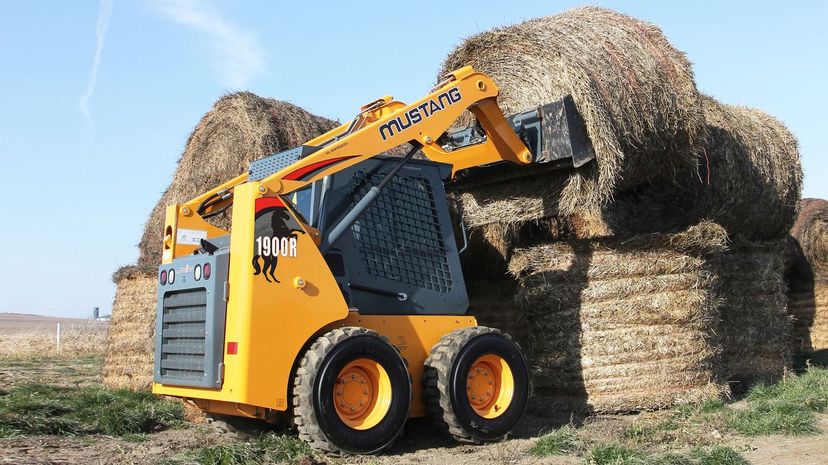
A skid loader is a lot like a front-end loader, but the design is a bit different. Skid loaders are more compact, and the arms and bucket are mounted differently. Theoretically, you can dig a hole with a skid loader from the inside, lifting and dumping out as you go. The driver is kept safe inside a fully enclosed cab.
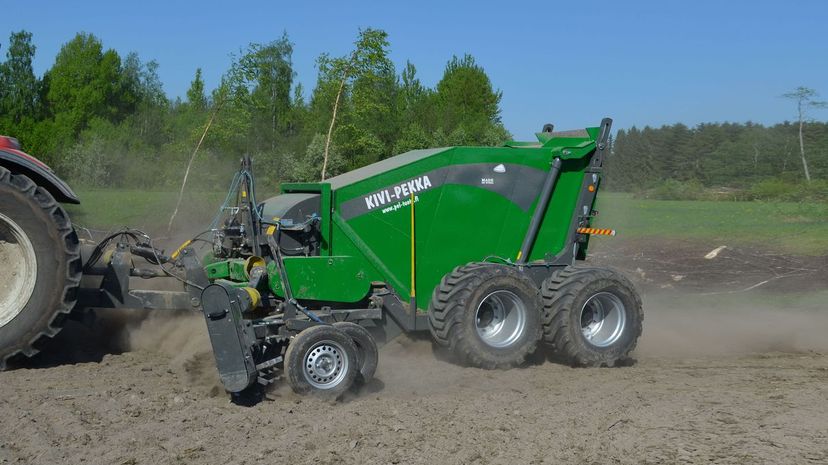
Does a stone picker pick stones? You bet it does. Dragged behind a tractor, it digs into the soil with large teeth and pulls everything inside itself. A sieve filters out loose soil, and a bucket of some kind will hold all the rocks that will otherwise damage more sensitive farming equipment and interfere with planting crops.

A grain auger is also called a screw conveyor and uses a rotating screw blade to help lift grain from a truck or cart up into a grain storage bin or silo. Usually, the screw blades are in some kind of tube to prevent the graining from falling all over the place.
Advertisement

It may have the most on-the-nose name in all of agriculture, but a potato planter is an attachment that goes on the back of a tractor or other machine. It makes the process of planting potatoes much faster than traditional hand-planting methods.